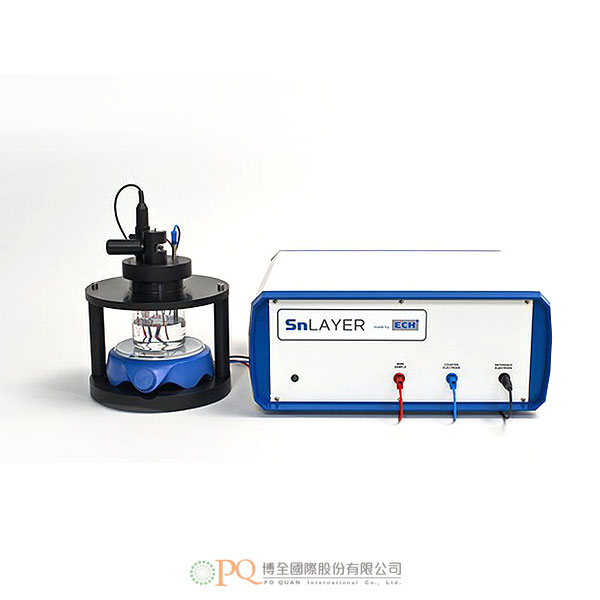-
The thickness of the non-alloyed and alloyed tin layer on thin copper wires can be measured with high accuracy in a short duration by the electrochemical Analyzer SnLayer.
The coulometric determination of the thickness of the tin layer at the copper wires based on a newly developed procedure: the technique of voltammetry with a multiple potential-ramp.
The total amount of tin as well as the non-alloyed and the alloyed tin-part is detectable in only one measurement.
Applications
- Determination of thickness of tin at copper wires
- Determination of the non-alloyed and alloyed tin layer
- Conductor board manufacture
- Wire and cable manufacture
- Quality management in rolling mills
- Application in metal industry
Advantages
- Complete measurement system for the layer thickness of tin
- Differentiation of non-alloyed and alloyed tin
- Fast analysis
- Typical duration: 8 min (non-alloyed and alloyed tin) < 2 min (non-alloyed tin)
- According to the actual standard regulations
- Automatic procedures
- Customer-friendly handling
- Pre-defined methods for selected wire-types
- Generation of individual methods
- Intuitive software
- Comprehensive statistic module
- Wide dynamic range for various wire-diameters and layer thickness
- High precision of the analysis
-
Working electrode: Sample wire Reference electrode: Ag/AgCl Counter electrode: Pt Typical duration: 2 … 8 Min (depending on the sample) Typical wire diameters: 0.05 … 8 mm Typical layer thickness: 0.01 … 22 µm Power supply: 230 V/50 Hz, 115 V/60 Hz Power input: 150 W Dimensions of control unit: 370 x 345 x 160 mm (L x D x H) Dimensions of titration unit: Max. 200 x 300 mm (Ø x H) Weight: 1 kg Device control: PC software (PC not included in the scope of delivery)








